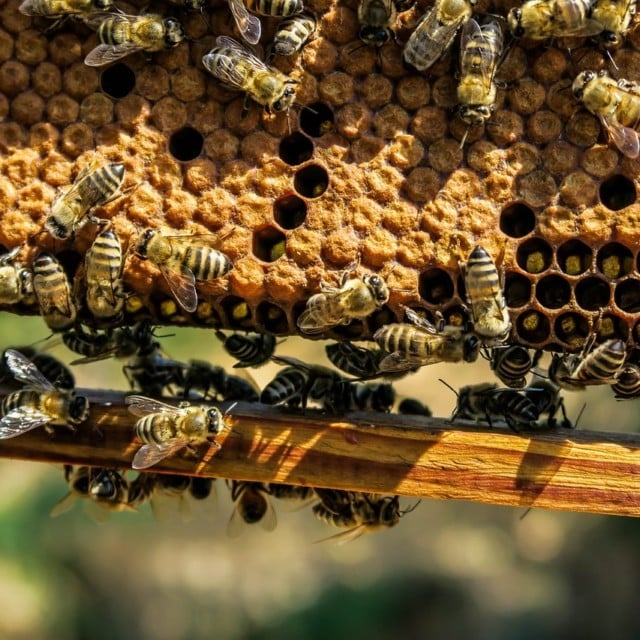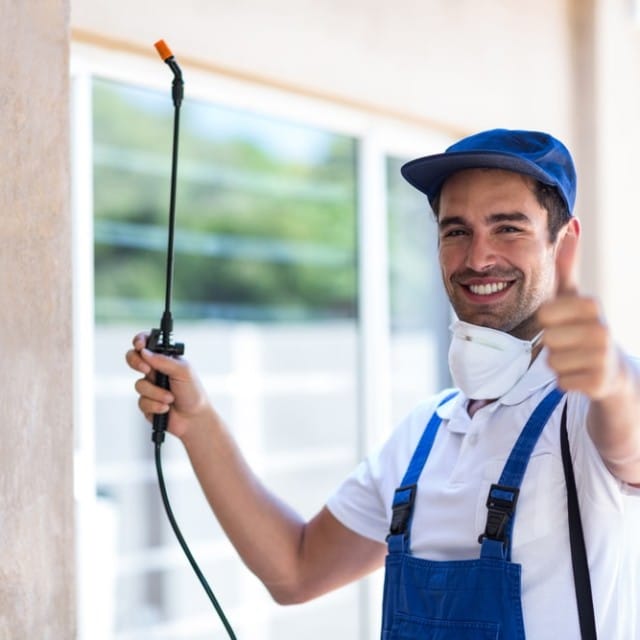Buzz Off: A Comprehensive Guide to Bee Nest Removal
Bees are crucial pollinators and play a vital role in ecosystems and agricultural productivity. They are essential for plant reproduction and producing fruits, vegetables, nuts, and seeds.
While bees are beneficial, there are instances when it becomes necessary to remove their nests. Bee nests are structures created by bees to serve as their homes. They are composed of beeswax, a substance produced by worker bees, and can be found in various locations such as trees, cavities, or man-made structures.
It is important to note that bee nests should be approached with caution, and removal should be carried out by trained professionals whenever possible. Due to bees’ crucial role in pollination and ecosystem health, efforts should be made to protect and preserve bee populations.
That’s why Pest Stop Boys have compiled this comprehensive bee nest removal guide.
Whether you’re dealing with a small nest or facing a more significant infestation, this guide will equip you with the knowledge and tools to address the issue while protecting these valuable insects.
Preventing Bee Nests from Forming
Prevention is the first line of defence against bee nests. This section provides practical tips and strategies for reducing factors that attract bees to your property. From minimising attractants to implementing preventive measures, we’ll guide you on creating an environment that discourages bee nest formation.
- Reduce Floral Attractants: Minimise the number of flowering plants close to your home, especially those that attract bees. Opt for non-flowering or less attractive alternatives in your landscaping.
- Seal Openings and Cracks: Inspect your property for gaps, cracks, or openings where bees could potentially build nests. Seal these openings with caulk or other materials to prevent bees from establishing colonies.
- Keep Outdoor Areas Clean: Regularly clean outdoor spaces, including patios, decks, and BBQ areas, to remove food residue, sugary spills, and sweet-smelling substances that may attract bees. This will discourage bees from frequenting these areas and potentially building nests nearby.

While homeowners can safely remove some bee nests, professional intervention would benefit certain situations.
- Safety: Professionals have the necessary expertise and protective gear to remove bee nests safely, minimising the risk of stings and allergic reactions.
- Expertise: Professionals possess deep knowledge of bee behaviour and effective removal techniques, ensuring accurate assessment and appropriate methods.
- Legal and Ethical Considerations: Professionals comply with regulations, prioritise ethical practices, and preserve the important role of bees in the ecosystem.
- Structural Considerations: Professionals can safely remove nests from within structures without causing damage.
- Complete Removal: Professionals thoroughly remove the entire nest, preventing future infestations.
Professional Bee Nest Removal Methods
When it comes to professional bee nest removal, understanding the available methods and selecting the right approach are essential.
- Chemical Methods: Professionals may use insecticides specifically formulated for bee nest removal, applying them directly to the nest or using dust or foam formulations. This method is effective for eradicating bee colonies, especially in hard-to-reach areas.
- Non-Chemical Methods: Depending on the situation and the type of bees, professionals may employ non-chemical methods such as physical removal, relocation, or trapping. These methods aim to remove the nest or safely relocate the bees without causing harm.
Choosing the Right Method for Your Situation:
- Assess the Nest Location: Consider the nest’s accessibility, proximity to human activity, and potential structural damage. Professional removal is crucial if the nest is within a structure or poses immediate safety concerns.
- Identify Bee Species: Different bee species may require specific removal techniques. Consult with professionals to identify the bee species accurately and determine the most suitable removal method.
- Environmental Considerations: If you prioritise environmental preservation and want to protect bees, inquire about non-chemical options and live bee removal methods.
- Safety and Efficiency: Consider factors such as the size of the nest, potential risks, and your comfort level in dealing with bees. Professional expertise ensures safe and efficient removal, especially for large or aggressive nests.
- Legal Compliance: Check local regulations regarding bee nest removal. Hiring professionals ensures compliance with any legal requirements.

Several factors can influence the cost of professional bee nest removal services. The size and location of the nest, the level of infestation, and the difficulty of accessing the nest are common cost considerations. The type of bee species involved and any specific safety precautions required can also impact the overall cost. To find an affordable and reputable pest control service, consider obtaining multiple quotes from different providers and comparing their pricing structures and services. Research customer reviews, ask for recommendations from trusted sources, and ensure that the chosen service is an experienced professional to guarantee quality and effectiveness.
Protecting Pollinators During Bee Nest Removal
As responsible stewards of the environment, it’s crucial to prioritise the protection of pollinators during the removal process.
Best practices for bee nest removal include:
- Hire a professional: It is recommended to seek the assistance of an experienced bee removal specialist who follows ethical practices and prioritises bee conservation.
- Time the removal: Conduct bee nest removal during cooler hours of the day or in the evening when bees are less active and more likely to be inside the nest.
- Use protective gear: Beekeepers and professionals should wear appropriate protective clothing, including bee suits, gloves, and veils, to minimise the risk of bee stings during the removal process.
- Minimise chemical use: Opt for non-chemical removal methods to minimise harm to bees and the environment whenever possible. This includes techniques such as vacuuming or physically relocating the nest.
Tips for relocating bees instead of killing them:
Consult a beekeeper: Reach out to local beekeeping associations or beekeepers who are often willing to collect and relocate bees to their apiaries.
Provide alternative nesting sites: Install bee-friendly nesting boxes or bee houses in your yard to provide alternative nesting options for bees, which may deter them from choosing undesirable locations.
Seek professional assistance: Engage the services of a professional beekeeper or bee removal specialist, such as Pest Stop Boys, with experience in safely relocating bees to ensure their survival.
Responsible bee nest removal practices help us coexist harmoniously with these essential insects and contribute to a healthier environment. By following the insights and recommendations outlined in this comprehensive guide, homeowners, property managers, and anyone concerned about bee nest removal will be equipped with the knowledge and tools to address the issue effectively while promoting the well-being of pollinators.
Contact Pest Stop Boys for safe, bee-friendly nest removal services!

